9th edition is out in the wild, and with it a whole raft of changes to the factions of Warhammer 40,000. Today, we’re taking a look at the Most Tactical Marines – how do the Deathwatch fare in 9th edition with all of the points changes, rules changes, and the new FAQs?
When Deathwatch first dropped in 8th Edition they were in the unusual situation of being one of the most powerful Astartes options thanks to the combination of several “+1 to wound” Stratagems, flexible kill teams, and Special Issue Ammunition giving every bolt weapon a serious boost. This changed rapidly last year as the core Space Marines line received a series of major updates (new Phobos units and transports, new rules with Combat Doctrines and Stratagems, and Psychic Awakening), though the Deathwatch did receive an update to include Combat Doctrines and a number of stratagems in a White Dwarf Index article. At the start of 9th edition, the Deathwatch are again in transition: They are set to be “folded in” to Codex: Space Marines along with the other non-Codex chapters in October when the new Codex: Space Marines releases. This means that everything is in flux, and while October is a ways away and we plan on taking some of what we know into account here, there’s a lot we don’t know and everything could change in two months by the time you get a handle on all of it. But we’ll write a new set of articles once that happens.
With all that said, let’s dive in.
The Rules Changes
While the 9th edition rules changed things for a every faction, there are a few specific ones to focus on with regard to Deathwatch:
Caps on Modifiers to To Hit and To Wound rolls
When resolving attacks in 9th edition, hit and wound rolls can never be modified by more than +1 or -1. For Deathwatch, this means there are a few areas where stacking bonuses To Wound (such as with stratagems and the Catechism of Fire litany) won’t do anything for you unless you’re up against a target that gives you -1 to your wound rolls.
Big Guns Never Tire
Vehicles can now move and shoot heavy weapons without penalty, and can shoot while engaged in combat at the units they are within Engagement range of. For Deathwatch this mostly affects Dreadnoughts, which can now be more mobile and are no longer helpless when they are tagged in combat, and the Corvus Blackstar, which gets to retain its accuracy on the move.
Wound Allocation
A big change that affects Deathwatch specifically are the new wound allocation rules: Once you start allocating wounds to a model, you have to allocate all attacks against that model for the rest of the phase or until it dies. Previously, you had the option of changing allocated models until one suffered a wound. If you’re running squads with mixed saves and toughness you may want to think ahead before allocating wounds.
Army Building
Army building has now changed significantly, rewarding players for taking fewer detachments rather than more. For the Deathwatch, this is a big help as it reduces the number of HQs and Troop choices we have to take and significantly increases the amount of CP we have to work with. The downside is that if you want to take more than 3 HQs you’ll find you need to add another detachment and reduce the amount of CP you have to work with.
Smaller Table Sizes
The recommended table size for games now significantly shrinks the battlefield, making it harder to stay out of units’ range and helping mitigate the Deathwatch’s reliance on mid-range shooting.
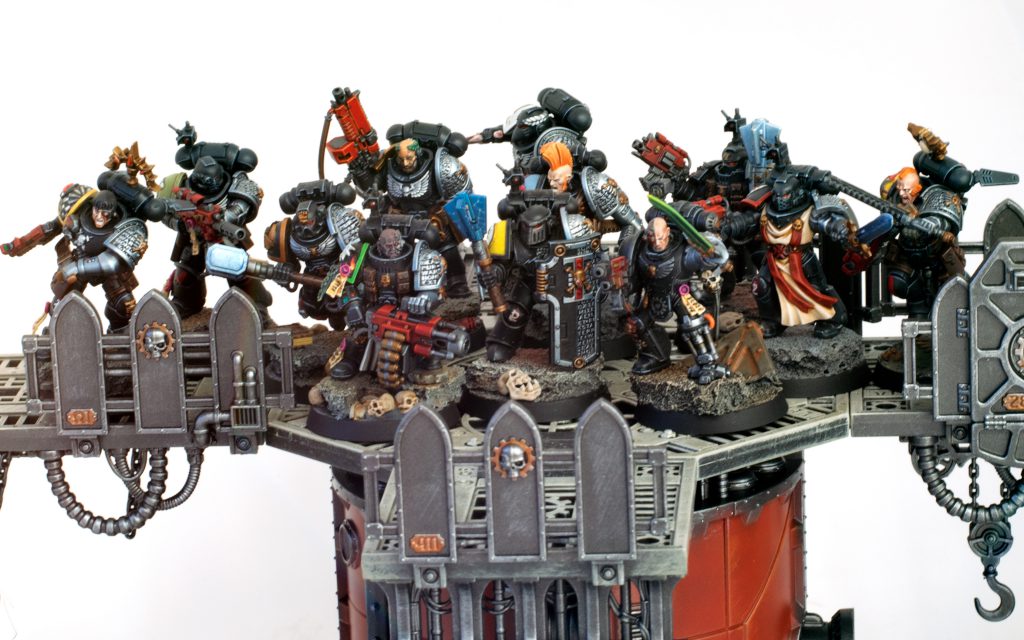
Points Updates
Deathwatch received a treatment similar to regular Astartes in the Munitorum Field Manual points update, and many of their points values are identical to their Codex equivalents. Some of the most egregious points increases have been offset by the fact that many weapon options are now zero-cost or “baked in” to the unit costs. For example while the Hellblaster went from 18 to 33 points, the plasma incinerators they are equipped with went from 15 to 0 and as a result the net cost of a Hellblaster stayed the same (unless you were taking the heavy option, in which case it dropped slightly).
Some of the biggest points changes were in Veteran Kill Teams; the venerable storm bolter / storm shield combination went from 18 points to 24, while Bikers saw a net increase of 5 from 23 to 28 points. The core price of the terminators remained unchanged (though the 1-point increase on storm bolters makes them a bit more expensive), while several options rose and fell to put their points costs into increments of 5. Meanwhile Intercessors went up to 20 points per model (+3) to match their Codex cousins, while auto bolt rifles are now free (-1). Intercessors had already supplanted Veterans in Deathwatch armies thanks to their ability to put out similar rates of fire with auto bolt rifles and greater resilience, so the points changes for storm bolters and storm shields hit Veteran Kill Teams fairly hard. Primaris Kill Teams should now be our primary focus.
The iconic Corvus Blackstar saw a huge price drop thanks to the removal of its weapon costs; a Blackstar with twin-linked lascannons and a pair of stormstrike missile launchers went from 207 to 180 points while it also gained the ability to move and shoot without penalty thanks to the Big Guns Never Tire rule. Not bad for an anti-tank focused flyer with a non-Primaris transport capacity of 12, though being an Aircraft that can’t carry Intercessors likely continues to hurt it in a competitive setting.
In the Heavy Support slot one of the big pains is the Relic Leviathan Dreadnought. Though not necessarily a staple of competitive lists, a semi-common tactic of Deathwatch armies had been to take advantage of the Deathwatch army’s ability to teleport a Leviathan into battle to mitigate the shorter range of its guns. The dreadnought received a hefty points increase (+45 for the base body, though the meltaguns got cheaper), making it a bit more painful to take. The addition of an ability to move and shoot without penalty and fire at units it’s engaged with provides some benefit, so it’s likely there’s still a place for the teleporting Leviathan in more casual lists. The Relic Whirlwind Scorpius also saw a minimal change, and appears to have moved to the Heavy Support slot (though this may just be foreshadowing for the upcoming Indexes). The Scorpius can add a powerful punch for ignoring line of sight and clearing objectives from a distance.
Also of note on the Forge World front are the Relic Contemptor, which saw an unexpected reduction in cost and are now even more efficient than they were before (though note that the upcoming Forge World Index may have already accounted for this), and so if you’re looking for a replacement for your now super-expensive Leviathan, consider the Relic Contemptor with a Cyclone Missile Launcher and either a pair of twin lascannons or a fist and twin lascannon. Both are also well-equipped to take advantage of Big Guns Never Tire and their newfound mobility and they add some real anti-vehicle punch to a Deathwatch army, especially one that can use Duty Eternal to reduce incoming damage.
Outside of the Veteran Kill Teams it seems like Deathwatch did okay.
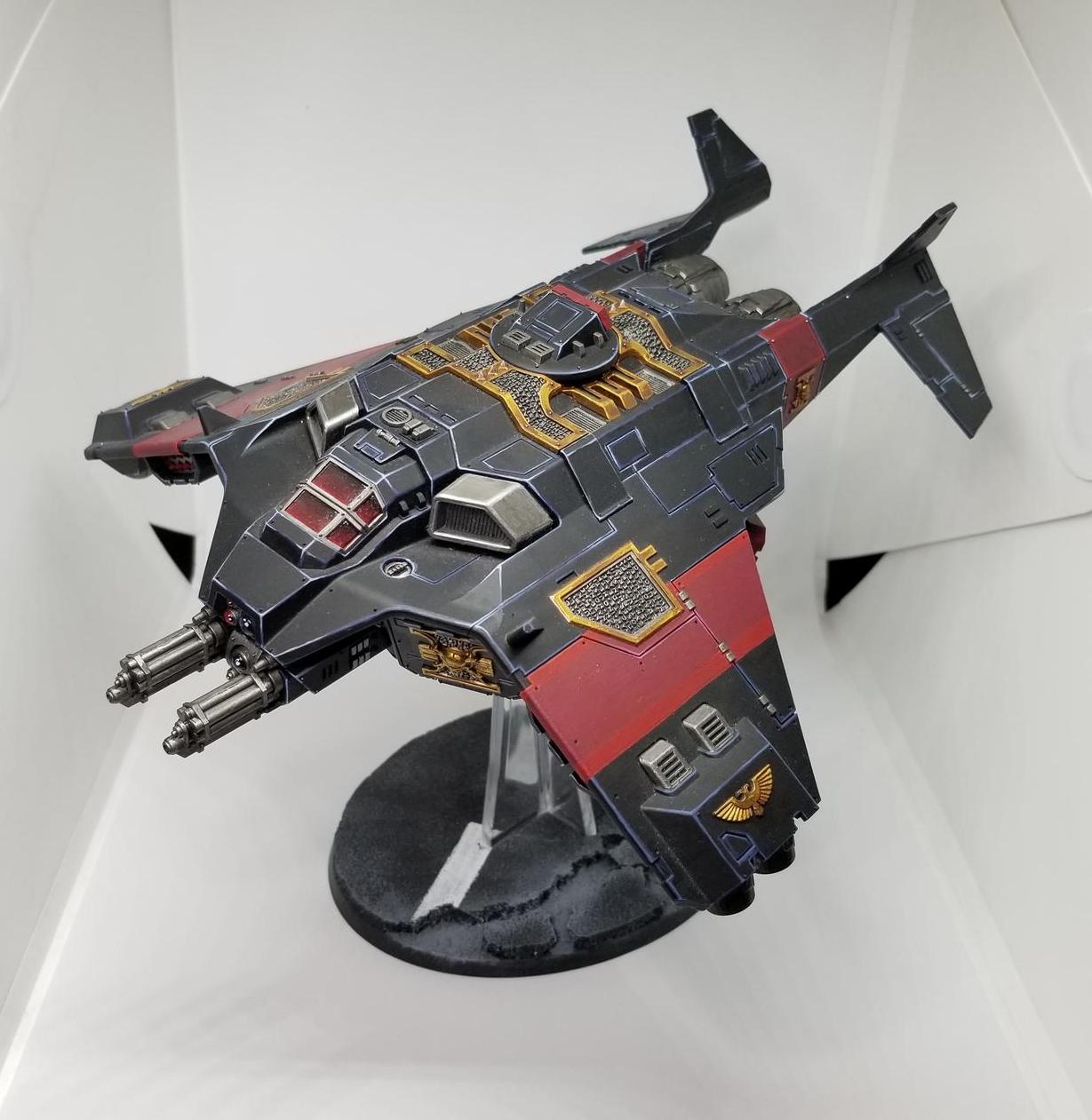
The FAQ
Deathwatch received the same FAQ treatment as all of the other Astartes factions, with Combat Doctrines now having a forced rotation set by turn and the Adaptive Strategy Stratagem has been removed entirely. Duty Eternal was changed to be in line with other Astartes versions, only subtracting 1 damage from incoming attacks instead of the ludicrously powerful effect of halving it. The only other change was a clarification that Combat Doctrines cannot cause modify the AP value of a weapon below the limitation specified by a particular Special Issue Ammunition round. Overall these changes aren’t that significant; with no super doctrinal ability and existing options to boost AP Deathwatch generally didn’t get masses out of Combat Doctrines anyway.
One significant change is that Inceptors now no longer allow Intercessor Squads to fall back and shoot (as that’s no longer an ability of units with FLY). This reduces their value in Intercessor squads considerably.
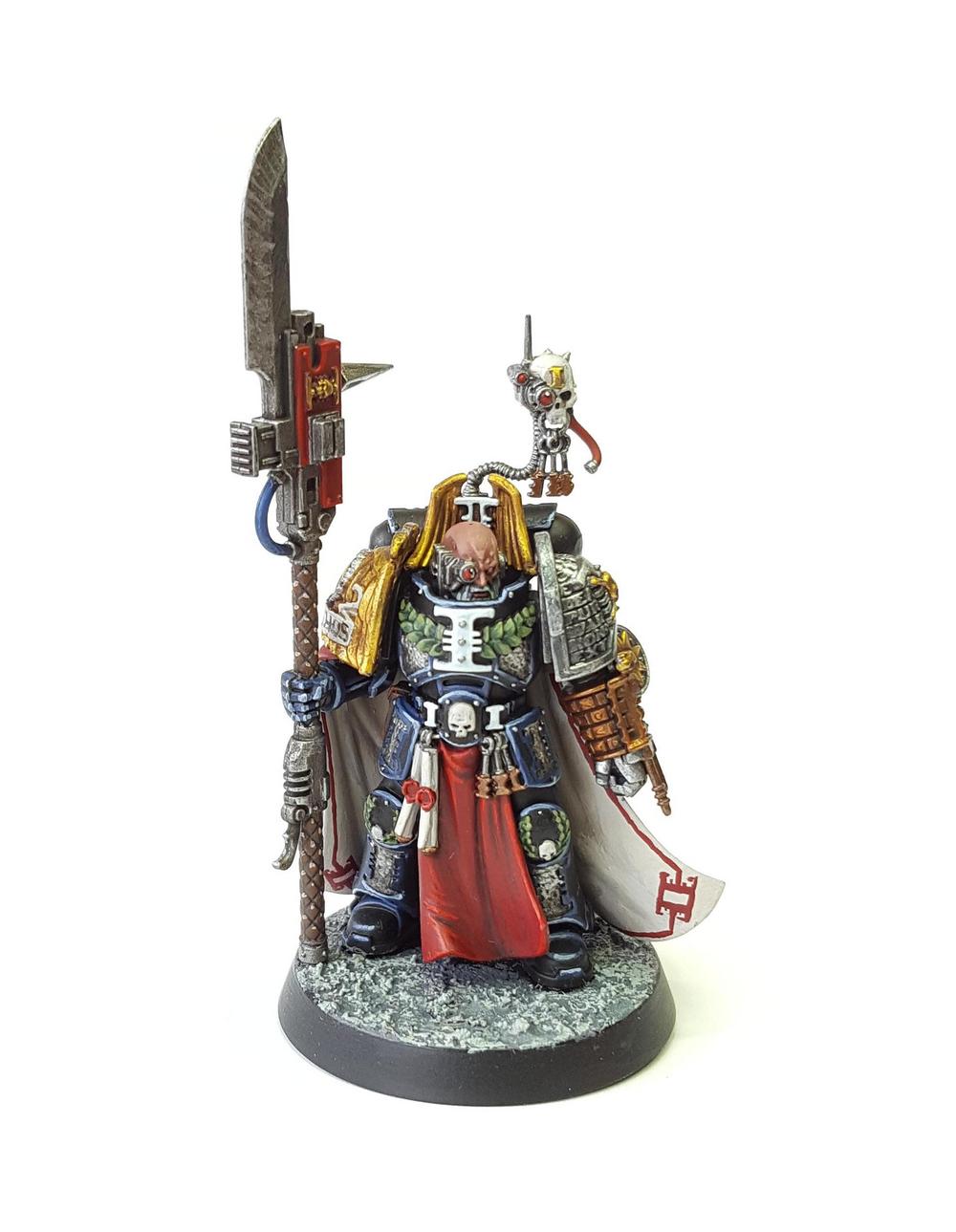
This is the Dawning of the Age of Indomitus
Games Workshop said that the new starter limited edition Indomitus box units would be available to every Astartes faction outside of Grey Knights, and that was true: Deathwatch units now get access to the Indomitus Captain, a Lieutenant and Ancient for the first time ever, plus the new Judiciars, Assault Intercessors, Outriders, and the very well received Bladeguard Veterans and Eradicators. None of the models receive access to Special Issue Ammunition, and unfortunately the Assault Intercessors and Outriders are currently standalone Datasheets that cannot be added to a Deathwatch Intercessors squad. The Eradicators in particular provide some desperately needed low-cost anti-tank capability that dovetails extremely well with the core Deathwatch abilities. The addition of the Lieutenant is also interesting since his Tactical Precision aura replicates the effect of Mission Tactics without the restriction of the target belonging to a specific Battlefield Role; it’s effectively a universal version of the Tome of the Ectoclades and also gives Deathwatch more flexibility in how to apply their abilities and reduces the amount of CP we’d need to spend changing Mission Tactics.
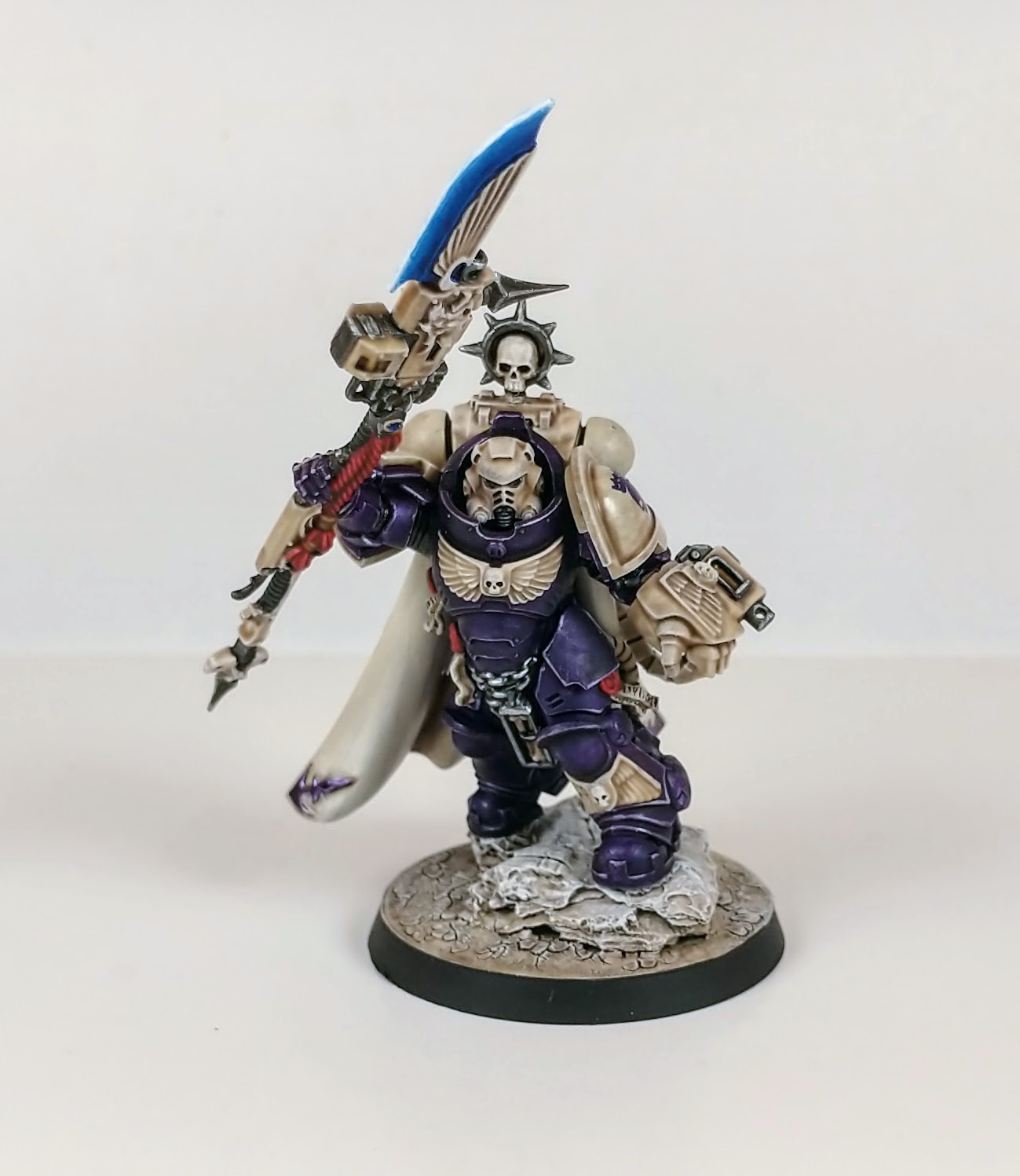
How They Play
As it currently stands, 9th Edition is heavily focused on controlling and maintaining objectives. This immediately puts Deathwatch at a disadvantage as their cheapest units are 85 points for a unit of boltgun Veterans. Players will likely want to spend the extra 15 points for a 5-man Fortis Kill Team of Intercessors; armed with stalker bolt rifles they can at least sit on an objective and have the range to threaten nearby targets. This means that even compared to Astartes (who can bring a unit of 4 Servitors for 28 points), Deathwatch will find themselves relegating a lot of points to sitting near numbered 40mm circles. This is compounded by the Deathwatch’s tactical reliance on taking mixed units of Intercessors and Aggressors to increase their toughness, making the units more expensive and increasing their model counts. This also makes action-based Secondary Objectives less appealing since the opportunity cost can be relatively high. Getting more CP means that Deathwatch will have more opportunities to use powerful abilities like the Doctrine Stratagems (providing a +1 to wound bonus against particular Battlefield Roles), the Xenos-specific doctrines like Overkill, and inexpensive weapons that deal mortal wounds like Tempest Shells, Hellfire Shells, or Hunter-Slayer Missile.
A Deathwatch force revolves around its Kill Teams, and this is one of the areas where the change in roster construction and Command Points greatly benefits the faction. In 8th Edition a player needed to maximize Command Points by fielding multiple detachments of small units; in 9th players can do whatever they want and still get the same CP. This means that Deathwatch players are free to field full-sized Kill Teams and either take advantage of the synergistic rules from merging things like Aggressors and Intercessors with auto bolt rifles, or split the teams and provide Objective Secured to units that would otherwise never get it (like a 5-man unit of Bikers that can also move up and down terrain as if they were infantry). The change to units with the FLY keyword makes putting an Inceptor into a Fortis Kill Team less appealing; if in melee the unit can no longer Fall Back and shoot “as if it could FLY” because units with the FLY keyword lost that ability.
Another area where Deathwatch are particularly strong is in their maneuverability. 9th Edition is an extremely mobile game, particularly at the 2,000-point level on a 44″ x 60″ board, and the Teleportarium Stratagem allows up to 3 units to be deployed anywhere on the battlefield that’s more than 9″ away from the enemy. This is a significant benefit over using Strategic Reserves, which are heavily constrained in where they can be deployed and are also relatively expensive in terms of CP required. The Beacon Angelis is also extremely powerful, allowing a unit to either be relocated or deployed from off the board. Units like Eradicators will be even more terrifying.
Choosing Secondary Objectives
Mission play in 9th edition revolves around being able to take and hold objectives (where you want units that are difficult to kill) to score primaries and choosing the right secondary objectives. Because even with their more durable units, Deathwatch tend to be glass cannons, that will place the emphasis on one particular set of secondaries over others. Generally speaking, you want to choose Secondary Objectives that align with your existing game plan, so secondaries like Domination and Linebreaker, which play to Deathwatch’s mobility are strong choices. Engage on All Fronts can also be good, though it may require you to spread your limited forces too thin. As you build your army, think about how you can build it to always accomplish or near-max two secondary objectives and then plan on picking your third based on the mission or opponent.
Purge the Enemy secondaries are also likely to be strong picks for Deathwatch thanks to their rules focus on killing specific targets, though watch out for ones that your opponent can mitigate by putting units into Strategic Reserves. Generally Bring it Down and Assassinate are going to be strong picks when your opponent has 6+ targets to take out and can’t just put them all in reserves and Titan Hunter will be a no-brainer if you’re playing against knights since you’ll need to kill knights anyways to have a chance of winning the game (just make sure to bring some hammer characters to help trash them). Deathwatch have never been reliant on Pyskers and so Abhor the Witch is a compelling reason to avoid taking any psykers since it opens things up for you to get easy points against Daemons, Grey Knights, and Thousand Sons armies.
Because the Deathwatch rely on small numbers of vulnerable units with relatively small model counts with a high amount of offensive firepower (glass cannons, if you will), they make a poor match for Action-based secondaries, where giving up a turn of action is rarely going to be a good trade. The one potential exception to this is likely to be Raise the Banners High, which only requires you stay alive until the end of your own turn and doesn’t necessarily require you sit on those objectives for the remainder of the game. Though again, you likely won’t want to have your Deathwatch teams spending their time raising banners and not shooting special issue ammo.
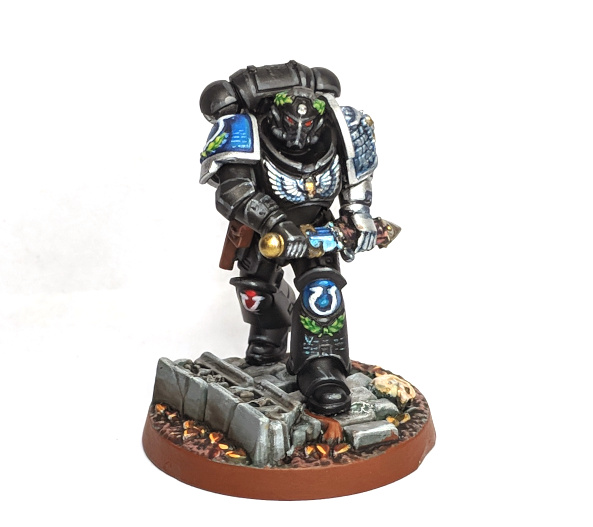
October Surprise
Games Workshop announced that Deathwatch will be part of the new Space Marine Codex that’s due to be released in October. They will be based on the core book and provided with a Supplement in the same way as the other Astartes chapters; the same will happen with Space Wolves, Blood Angels, and Dark Angels. As part of the preview, GW showed a video which rapidly showed several pages… and being the obsessive focused fans we are, we managed to parse some of the content. One of the pages shown was the Chapter Tactics for each faction, and in the bottom right was an entry for Deathwatch.
Deathwatch: Xenos Hunters
Each time a model with this tactic makes a melee attack against a TYRANIDS, AELDARI, ORK, NECRONS, or T’AU EMPIRE unit, re-roll a hit roll of 1.
After both sides have finished deploying their armies, select one Battlefield Role. Until the end of the battle, each time a model with this tactic makes an attack against an enemy unit with that Battlefield Role, re-roll a wound roll of 1.
Without context it’s impossible to know how much of a change this is for Deathwatch. The faction-specific bonus to melee attacks is useful (albeit limited) in an edition that puts more of an emphasis on melee for clearing objectives, and the Mission Tactics portion is the same as it is now. What really matters is how the rest of the book and the corresponding Supplement changes things – if Deathwatch gain access to the full spectrum of Codex: Space Marines units, that will open up a lot of possibilities and completely change how the army is built. The only certainty is that things will be significantly different a few months from now.
Example Armies
We know changes are coming, but with new units to work with and new points costs to consider, how should we think about building lists now?
Kevin’s List
This list is similar to the one we published in Start Competing, but takes advantage of new units and the new CP structure.
Deathwatch Battalion Detachment (1,995pts)
+ Agents of the Imperium +
Assassin of Your Choice [5 PL, 100pts]
+ HQ +
Primaris Captain (Indomitus) [5 PL, 105pts]
Watch Master [7 PL, 125pts]
+ Troops +
Intercessors [15 PL, 340pts]
5 Intercessors, Auto Bolt Rifle
5 Aggressors, Boltstorm
Thunder Hammer
Intercessors [15 PL, 340pts]
5 Intercessors, Auto Bolt Rifle
5 Aggressors, Boltstorm
Thunder Hammer
Intercessors [15 PL, 340pts]
5 Intercessors, Auto Bolt Rifle
5 Aggressors, Boltstorm
Thunder Hammer
Intercessors [5 PL, 100pts]
5 Intercessors, Stalker Bolt Rifle
Chainsword
Intercessors [5 PL, 100pts]
5 Intercessors, Stalker Bolt Rifle
Chainsword
+ Elites +
Judiciar [4 PL, 85pts]
+ Heavy Support +
Eradicator Squad [5 PL, 120pts]
Eradicator Squad [5 PL, 120pts]
Eradicator Squad [5 PL, 120pts]
++ Total: [91 PL, -3CP, 1,995pts] ++
The Stalker teams serve as backline objective holders while still being able to threaten targets with long-range sniper fire. The core of the force are the 3 Fortis Kill Teams; each unit is a 25 wound T5 monstrosity which can put out a prolific number of shots while moving and shooting without penalty. They’re also a considerable threat in melee with 20 power fist and 5 thunder hammer attacks on the charge. I intentionally avoided a Relic Contemptor since I’m not sure what GW’s plans are for them long term, but if you already have the model it’s certainly worth trying to fit in. In terms of Relics the Tome of the Ectoclades and the Beacon Angelis are the only two I would really consider. The Tome is great for adding flexibility while the Beacon allows you to effectively deep strike 4 units for 3 CP. Deathwatch Warlord traits aren’t the best but Lore of Hidden Knowledge is viable given that you’ll be spending more CP this edition, or Castellan of the Black Vault for +1D to a weapon of your choice.
Rob’s “Dammit I am Playing with my Corvus Blackstar” List
Kevin already did the serious list for Deathwatch and to be frank I don’t think there’s a ton of variability in the higher-end lists for Deathwatch right now, plus those are gonna change when and if the army gets access to Impulsors and Infiltrators anyways. So instead, here’s my list, which is based on turning the shit models I’ve already painted into something that I think can go 2-1 at an RTT. Maybe.
Deathwatch Battalion Detachment (-1 CP, 2,000 Points)
HQ: Watchmaster, Relic: Tome of the Ectoclades
HQ: Watch Captain w/Jump Pack, Thunder Hammer, Storm Shield, Warlord: Castellan of the Black Vault
HQ: Chaplain w/Jump Pack, Power Fist, Litany: Canticle of Hate, Hero of the Chapter: Lord of Hidden Knowledge (-1 CP)
Troops: Intercessors x5 w/Auto Bolt Rifle – Sergeant w/Thunder Hammer, Boltstorm Aggressors x5
Troops: Intercessors x6 w/Stalker Bolt Rifle – Sergeant w/Thunder Hammer
Troops: Veterans x5 w/Storm Bolter + Storm Shield + Sergeant, 5x Bikers w/Chainsword, 1x Teleport Homer
Troops: Veterans x5 w/Storm Bolter + Storm Shield, Watch Sergeant w/Storm Bolter + Storm Shield, 4x Veterans w/Frag Cannon, 1x Terminator w/Assault Cannon, Power Fist
EL: Relic Contemptor w/2x Twin Lascannons, Cyclone Missile Launcher
EL: Primaris Apothecary
FLY: Corvus Blackstar w/Twin Assault Cannon, 2x Stormstrike Missile Launchers
DT: Razorback w/Twin Lascannon
There are some things that haven’t aged well in this list – most notably the Veterans – but overall I think you could do a lot worse. Truth be told, the Corvus Blackstar probably still isn’t worth it, but I’m bringing it here until the new Codex drops and they’re finally forced out for got by a host of other new options. The list pulls the usual trick with the 10-man Intercessor Squad and combat squads the Bikes and Veterans to create very mobile ObSec bikes while allowing the other half of the squad to embark in the Razorback. Meanwhile, the combat squad with Frag Cannons embarks in full in the Blackstar with the Watchmaster. The Intercessors can try and hold the middle of the table while the Frag Cannon squad harasses the opponents’ flank and rare objectives, and the Contemptor brings in some extra firepower.
If you were to tell me that this list is better with Rhinos than Blackstars well, I’d believe you. It’s probably better jettisoning the Veterans and going with all Primaris units and then swapping out transports for Impulsors when those become available. But I’ve got a good two months before I have to worry about that.
Outlook: Hazy, Try Again in October
Overall the Deathwatch made out OK with points but may suffer a bit in early 9th edition due to the way they operate as an army but it’s hard to evaluate the faction knowing that they’ll get a major change to their structure in two months. For now the outlook is tentatively positive, but we’ll need to see what changes – and new units – the Codex brings.
If you have any questions or feedback, drop us a note in the comments below or email us at contact@goonhammer.com.


